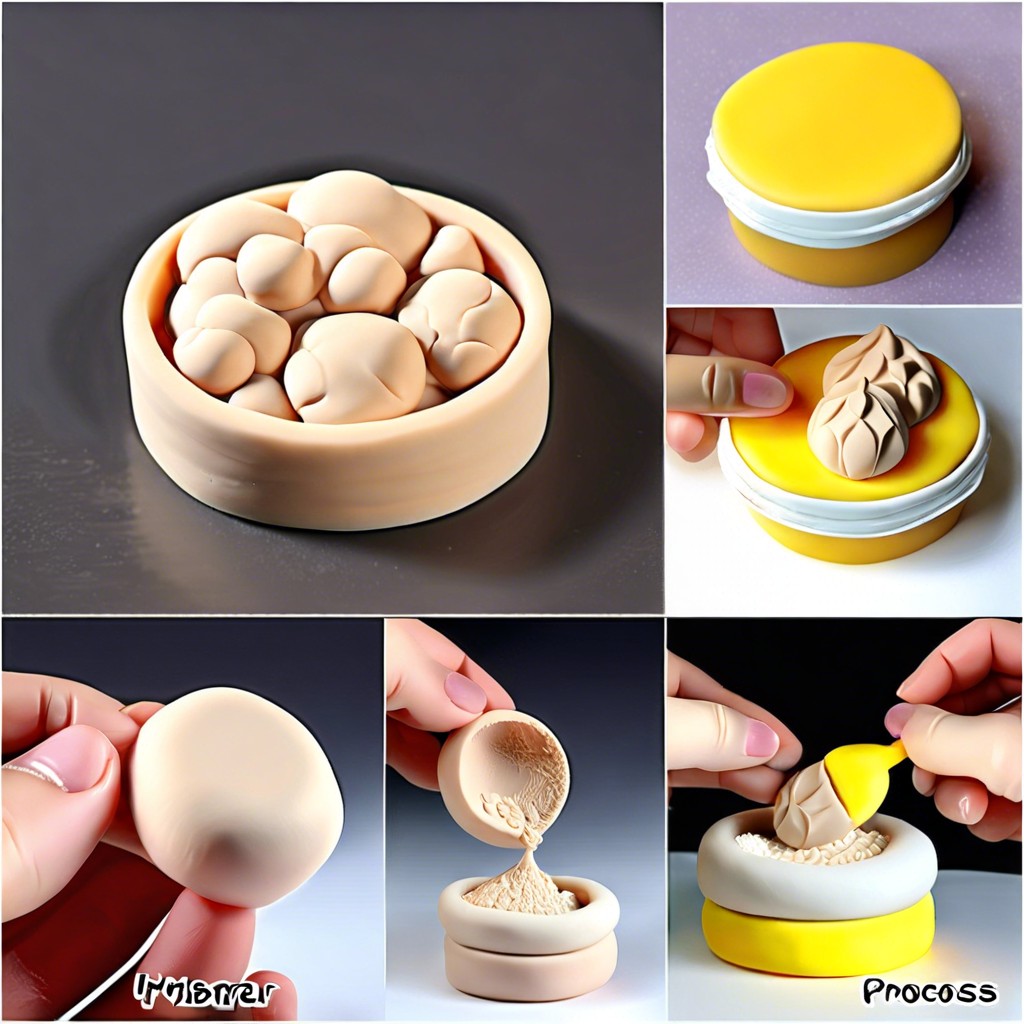Wondering if you bake polymer clay? Yes, you do, and this article will guide you on how to do it right!
Key takeaways:
- Preheat oven to recommended temperature, usually 265-275°F (129-135°C).
- Place creations on baking sheet, cover with foil to prevent browning.
- Bake for 15-30 minutes depending on thickness, follow package instructions.
- Let finished piece cool completely before handling or warping may occur.
- Avoid microwaving polymer clay, use oven for even baking.
How Do You Bake Polymer Clay?

First, start by preheating your oven. Most polymer clays bake at around 265 to 275 degrees Fahrenheit.
Put your creations on a baking sheet. Cover them with a tented piece of aluminum foil to prevent browning.
Bake according to the package instructions, usually between 15 to 30 minutes depending on thickness. Remember, each type of polymer clay can vary, so checking the manufacturer’s guidance is crucial.
Always let your finished piece cool completely before handling it extensively. Trying to use or manipulate it while still warm can lead to warping or damage.
And there you have it, polymer clay baked to perfection without any smoke or fire alarms blaring!
How to Bake Polymer Clay in a Regular Oven
First, preheat your oven. Just like you do when baking cookies—because, let’s face it, polymer clay isn’t going to bake itself! Check the package for the recommended baking temperature. Typically, it’s around 265-275°F (129-135°C).
Place your clay creation on a ceramic tile or a baking sheet. This helps distribute the heat evenly, which means fewer chances of ending up with a lopsided masterpiece. Feeling fancy? You can also use parchment paper to avoid shiny spots on the bottom.
Bake the clay for the recommended time, usually 15-30 minutes, depending on its thickness. As a rule of thumb, bake 15 minutes per quarter inch of thickness. However, resist the urge to crank up the heat to save time—it’s not a microwave dinner!
Keep an eye on it, but don’t keep opening the oven door. This is not a horror movie scene where you check behind every door. Opening the oven too much can cause uneven baking.
Once baking is done, let the piece cool inside the oven or in room temperature. Hot clay is delicate—think fresh-out-of-the-oven cookies. Patience now equals fewer tears later!
Can You Bake Polymer Clay in a Microwave?
Microwaves and polymer clay are not exactly a match made in heaven. In fact, putting polymer clay in a microwave can turn into a disaster faster than you can say “oops.” Here are a few reasons why:
- Polymer clay needs consistent, even heat to cure properly. Microwaves don’t provide that.
- Microwaves can cause the clay to heat unevenly, leading to scorch marks, bubbling, or even worse – a smoky mess.
- Safety first! Microwaving polymer clay can release fumes, and nobody wants to turn their kitchen into a chemistry lab gone wrong.
So, while microwaves are great for reheating leftovers, they’re not so great for baking polymer clay. Stick to the oven for this one. Your clay (and kitchen) will thank you.
Best Temperature to Bake Polymer Clay
Different brands of polymer clay have their own baking preferences, just like humans and their coffee. Generally, baking temperatures range between 230°F to 275°F (110°C to 135°C). Here are a few pointers to ensure you get it right:
- Check the packaging: Most brands are pretty chatty and will tell you exactly what temperature to use.
- Use an oven thermometer: Oven dials are known for lying. To avoid finding melted alien blobs instead of your masterpiece, trust a thermometer.
- Avoid cranking up the heat: Higher temperatures won’t make the clay cook faster. Instead, it will lead to burning and an unpleasant odor that your nose won’t thank you for.
- Preheat the oven: Consistency is key. Ensure your oven is at the right temperature before inviting your clay creations inside.
Stick to these tips, and your polymer clay will be on its best behavior in the oven.
How Do You Know When Polymer Clay Is Done Baking?
First off, patience is key. Don’t poke your polymer clay right out of the oven like it’s a sleeping bear. Just let it cool down a bit.
Once cooled, give it a little bend. Properly baked clay is flexible and won’t snap easily. If it crumbles or breaks, it’s either underbaked or you’ve been pranked.
Check the sheen. Shiny stuff should stay shiny, matte finishes should stay matte. If your piece is unexpectedly glossy, it might have been overbaked. Consider it a fancy accident.
Flexibility test. Gently press your nail into a hidden spot. It should leave a slight mark but shouldn’t gouge out material like frosting on a cake. If it’s smooshy, it needs more baking.
Sniff test—no kidding. Properly baked polymer clay has barely any smell. If it smells burnt, well, you may have just created the world’s ugliest paperweight.
Recap




